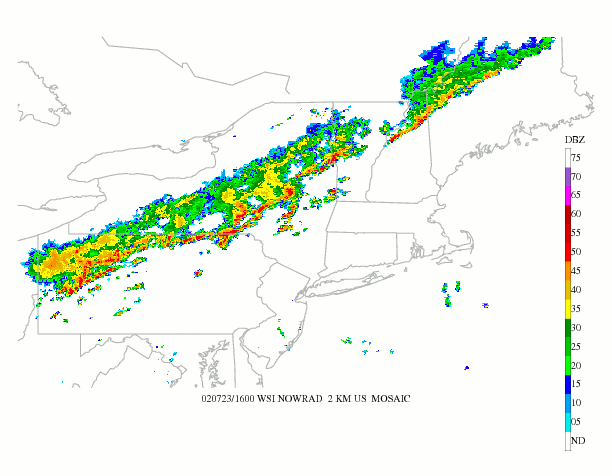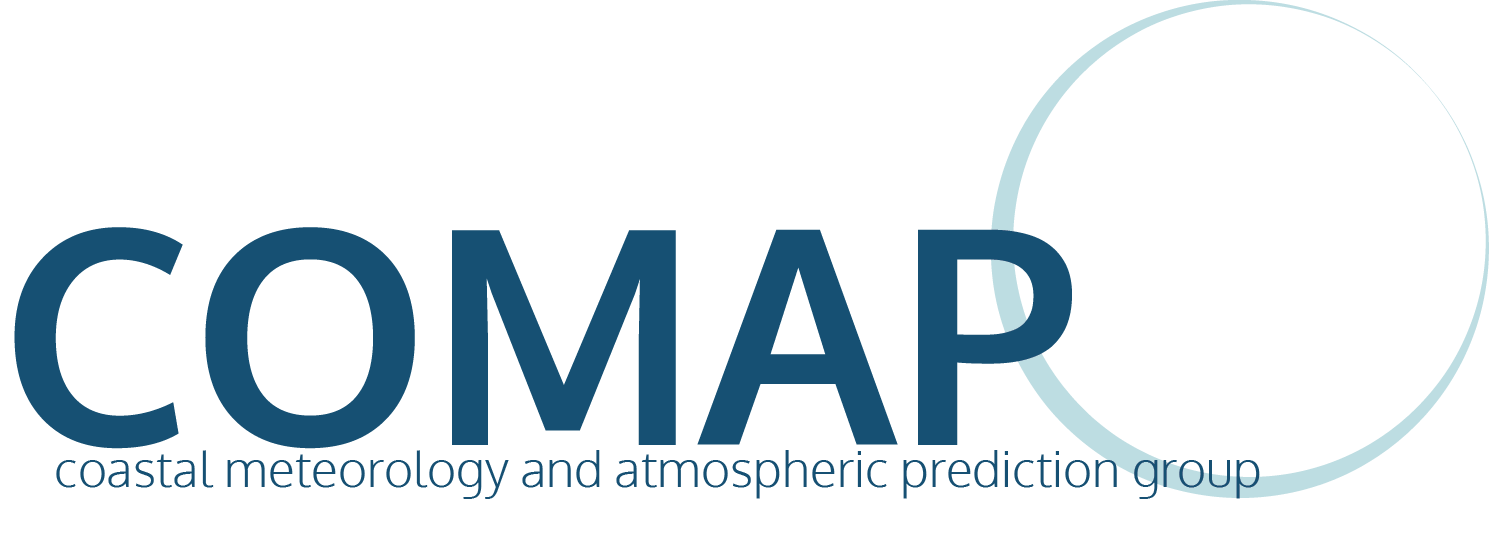Convection over the Northeast U.S.
 While there has been a comprehensive examination of convection over the central United States, there has been a comparatively smaller effort focused on convection over the northeast United States. The lifecycle of Northeast convection can be modified by the underlying complex orography as well as the Atlantic coastal boundary. The goal of this research is to understand the structural evolution of warm season convection over this region in response to the varying surface conditions. Toward this end, we identified the spatial and temporal distribution of various convective structures over the region, as well as highlighted the ambient conditions that support each convective type.
While there has been a comprehensive examination of convection over the central United States, there has been a comparatively smaller effort focused on convection over the northeast United States. The lifecycle of Northeast convection can be modified by the underlying complex orography as well as the Atlantic coastal boundary. The goal of this research is to understand the structural evolution of warm season convection over this region in response to the varying surface conditions. Toward this end, we identified the spatial and temporal distribution of various convective structures over the region, as well as highlighted the ambient conditions that support each convective type.
Though the evolution of quasi-linear convective systems (QLCSs) over central U.S. land areas has been well documented, there is considerably less known about the interaction of QLCSs with land-ocean boundaries. It is unknown why some systems quickly decay when encountering the coast while others maintain their intensity. This becomes particularly important in the coastal regions of the northeastern U.S. (i.e. New York City and Long Island) where millions of people live, since many of these QLCSs can produce damaging winds as well as flash flooding. To better understand these dynamic systems, this work identified coastal northeastern U.S. QLCSs over six warms seasons and categorized them into three groups, including decaying, slowly decaying, and sustaining systems, based on their evolution upon encountering the Atlantic Ocean. A composite approach has been implemented to highlight the thermodynamic and synoptic conditions favoring each of these three evolutions. To isolate the processes controlling the differing lifecycles, two contrasting events have been explored in detail through observational analyses as well as Weather Research and Forecasting (WRF) simulations down to 2-km grid spacing with a 500 m nest.

Presentations
The Evolution of Quasi-Linear Convective Systems Encountering the Northeastern US Coastal Marine Environment – 13th Northeast Regional Operational Workshop – 2-3 November 2011, Albany, NY
Warm Season Convective Storm Structures over the Northeastern U.S. and their Interaction with the Marine Environment – 14th Confernece on Mesoscale Processes- 1-4 August 2011, Los Angeles, CA
Relationship between Organized Convective Structures and Severe Weather Type over the Northeast U.S. – 91st AMS Annual Meeting;24th WAF/NWP, Seattle, WA, 23-27 January 2011
A Comparison of the Ambient Conditions Favoring Different Organizational Convective Structures over the Northeast U.S. – 25th Conference on Severe Local Storms, Denver, CO, October 2010
A climatology of Convective Types over the Northeast U.S. and their Structural Evolution from the Lee of the Appalachians to the Atlantic Coast – 13th Conference on Mesoscale Processes, Salt Lake City, UT, August 2009
Evolution of Severe Convection in the New York City Region – AMS Annual Meeting, Phoenix, AZ, 2009
A Climatology of Convective Types over the Northeast US: Ambient Conditions and the Role of the Appalachian Lee on Initiation – 11th Northeast Operational Workshop, Albany, NY, November 2009
A Spatial Climatology of Convection in the Northeast U.S. – 10th Northeast Operational Workshop, Albany, NY, November 2008
A Climatology of Convective System Morphology over Northeast United States – 10th Northeast Operational Workshop, Albany, NY, November 2008
A Climatology of Convective System Morphology over Northeast United States – 24th Conference on Severe Local Storms, Savanah, GA, October 2008
Synoptic and Mesoscale Overview of Three Convective Events over Long Island in 2007 – 9th Northeast Operational Workshop, Albany, NY, November 2007
Convective Initiation and Evolution Approaching the Southern New England Coast and Long Island – 12th Conference on Mesoscale Processes, Waterville Valley, NH, August 2007
Students Involved
Kelly Lombardo
John Murray (M.S. 2009) — currently at NOAA/NWS New York City
